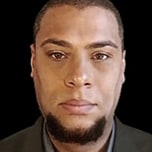White Spaces, White Privilege and White Fear: Negrophobia Still Contaminates America
Chauncey DeVega, Salon, August 28, 2018
In a video recorded last Thursday, a doctor named Jeffrey Epstein, who is white, created a disturbance at Orlando International Airport because he felt he was being treated poorly by an airline.
{snip}
This is such an open secret that even a middle-aged Republican doctor in Florida understands it: In the United States there is one standard of behavior and accountability for white people and a different one for everyone else.
This open secret also explains that even when white Americans may tell pollsters and other researchers that they believe police treat whites and African-Americans the same way, in reality white people know that claim is not true.
In many ways, the self-comforting myth of “colorblind” justice and a “post-racial” America is a way of perpetuating a long history of white privilege and a double standard of treatment in which whites as a group presume and assume a latitude of action, freedom and entitlement that is not allowed to others.
{snip}
Negrophobia, this unfortunate fact of American life, is not the “mere” humiliation of being harassed by the police for the “crime” of walking down the street, sleeping in public, taking a nap in the lounge of a college dorm where you are a student, eating, daring to complain to a store manager about poor service, jogging, shopping in a store, holding your baby, or driving in a neighborhood where the police stop you because “you don’t belong.”
Negrophobia is also more than the indignity wielded through white privilege, which empowers whites both as a group and as individuals to appoint themselves as rightful enforcers and protectors of the boundaries “protecting” white spaces from black and brown people. Negrophobia is mental, physical and emotional violence against black people. It is the direct opposite of the white entitlement and white privilege which presumes the inherently benign nature of whiteness and the dangerousness of black and brown people.
In a recent essay, the sociologist Elijah Anderson explains the policing of white spaces and the power of negrophobia:
Part of the answer has to do with the ubiquity of cell phones and social media, which allow news of racist incidents (which have always existed) to spread quickly.
Yet there is also a sociological explanation. Many white people have not adjusted to the idea that black people now appear more often in places of privilege, power, and prestige — or just places where they were historically unwelcome.
When black people do appear in such places, white people subconsciously or explicitly want to banish them to a place I have called the “iconic ghetto” — to the stereotypical space in which they think all black people belong, a segregated space for second-class citizens.
A lag between the rapidity of black progress and white acceptance of that progress is responsible for this impulse. This is also exacerbated by the current presidential administration, which has emboldened white racists with its racially charged rhetoric and exclusionist immigration policies.
As whites “observe black people navigating the ‘white,’ privileged spaces of our society,” Anderson continues, “they experience a sense of loss or a certain amount of cognitive dissonance. They may feel an acute need to ‘correct’ what is before their eyes, to square things, or set the “erroneous” picture right — to reestablish cognitive consonance. White people need to put the black interlopers in their place, literally and figuratively. Black people must have their behavior corrected, and they must be directed back to ‘their’ neighborhoods and designated social spaces.”
{snip}
From the women’s auxiliaries of the Ku Klux Klan to false cries of rape and sexual assault that led to thousands of black men and boys being lynched across the United States to the fictional black man who has all too frequently been conjured up by white women as supposed kidnappers of them or their children, in America’s racial project, white women have, in most ways, been equal partners with white men.
In a special commentary, the editorial board of the Connecticut Law Tribune provides some context for this reality:
While police have escalated the indignity in some of these incidents — arresting the men at Starbucks, patting down the Native American students, detaining the graduates at the Airbnb — these are not primarily stories of police misconduct. Instead, they are stories about the ways white people are using the police to create and enforce their own sense of who belongs where. Black woman in grad student common room? Call the police. Native American students without a parent on a college tour? Call the police. Black women in a white residential neighborhood, or playing golf? Or at a Starbucks? In every case, call the police.
Callers may believe they are reacting to common perceptions of their targets. Primarily women, the callers may justify their calls as a matter of protection. But just as there may be a perception that black and native people are different and/or dangerous, how are the callers perceived? What is really being threatened other than traditionally white, middle-class spaces? … The idea that black and brown folks pose a threat to white people — particularly, white women — is a product of the campaign to keep discrimination legal.
{snip} Negrophobia is a public health crisis.
{snip}
“{snip} That means the mental health burden for African Americans caused by police killings of unarmed Black victims is nearly as great as the mental health burden associated with diabetes.”
{snip}
In a country where black people are stereotyped as criminals by the news media and popular culture as a whole, where many whites dehumanize black people by subconsciously linking them to apes, many white Americans believe that black people are magical and possess superpowers, black children are consistently imagined to be much older than they are, and whites believe that black people are impervious to pain, negrophobia and the resulting need to protect white spaces will prevail.
{snip}

Chauncey DeVega















